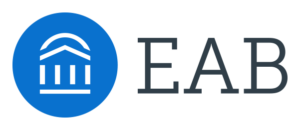
Opinions expressed in AGB blogs are those of the authors and not necessarily those of the institutions that employ them or of AGB.
While things are not the same as 2019, campuses are beginning to resemble what they once were. Students are shuffling around campus, faculty are teaching and conducting research, and administrators are planning program improvements to enhance the student experience. Hiring freezes are diminishing and institutions are becoming more aggressive about increasing revenue, especially from philanthropic gifts. (Source: EAB Advancement Forum benchmarking study of 104 universities)
While this sounds like great news, colleges and universities across the country are having difficulty hiring development staff to lead these efforts. Unlike in past years, there isn’t much movement. In a 2019 survey from the Chronicle of Philanthropy and the Association of Fundraising Professionals, 51 percent of fundraisers said they planned to leave their current jobs by 2021, and more than 30 percent said they planned to leave the profession completely. Now, more than 80 percent of respondents intend to remain where they are along with the scores that are still opting to leave fundraising.
Hiring managers expecting competitive applicant pools are finding fewer candidates with relevant experience. In addition to the saturated marketplace looking for talented staff, personal factors, such as family responsibilities, an appetite for remote work, and work fatigue, are making development leaders more difficult to acquire. What should advancement leaders do to appropriately grow their teams?
The temptation is to settle by hiring whoever seems remotely qualified even if they are not what you were looking for. Sure, you may get lucky, but do you really want your important leadership hire to be based on chance? Don’t settle, and don’t give up hope!
Here are a few tips as you hire development leaders:
1. Hire a person, don’t fill a position.
When positions have been vacated, the temptation is to revert to unspoken business rules: “Everyone is replaceable.” “The longer the position is unoccupied, the backlog of work falls unfairly on others.” “The main priority is filling the position as quickly as possible.” All of these have elements of truth, but this mindset focuses on finding a strong resume to slide into the preexisting role or match a job description found on the internet. Rushing the hire does not set an encouraging tone for the current team, and any delays in hiring may cause increased anxiety or grumbling about leadership or departmental direction.
Focus your attention on hiring the right person. Positions have firm outputs and rigid boundaries; people are influential and dynamic. A plug-and-play hiring approach overlooks the idea that great employees are not replaceable. Nor does simply filling empty seats make an organization successful. Great people go above and beyond their position description. As a leader, you’ve probably made a wish list of how to reconfigure your team to strengthen the development program. Instead of thinking of the vacancy as a way to get production out of a position, see it as an opportunity to hire someone who can help advance your development vision.
2. Assess your current development culture.
Now that you’re focused on adding a person to further your vision, make time to assess the health of the team, program, or environment where this position resides. Regardless of talent, if someone is not put into an environment that fits well, it will be a difficult road. On a simple scale, consider how well you currently do in these seven areas:
- Engagement with constituents
- Strategic collaboration with colleagues
- Regular internal communication
- Opportunities for innovative ideation
- Industry education and awareness
- Professional development opportunities
- Development strategic planning
Own and celebrate your strengths! Make them attractive to candidates (and current employees). Consider ways to address the two weakest areas out of the seven.
3. Hire with a plan in mind.
You’re focused on hiring a person who can add to the current culture and move you toward your vision and goals. Do you know what type of leader you are willing to consider? Prepare for the interview by planning questions that ascertain who this person might be in your development plans.
- Rookie—Experienced but needs time to grow as leader
- Builder—Develops programs from very little
- Sustainer—Can inherit a foundation and keep things moving forward
- Innovator—Serves as a visionary, ready to implement new ideas
These styles are not mutually exclusive, and there’s no wrong answer! Keep in mind the best match for your needs to avoid development program regression. EAB’s hiring toolkit can help uncover competency-based skills that you need in a candidate.
Hiring development leaders is part of building and maintaining a successful program. Regardless of whom you hire, EAB provides Advancement Marketing Services solutions through multichannel campaigns that support your fundraising goals and free your staff to focus on your highest priorities.
Shawn is the consultant and principal for EAB Advancement Marketing Services, an AGB sponsor. With 20+ years of successful development experience in higher education and K-12, Shawn provides insight as a subject matter expert into the strategies and implementation of effective fundraising and marketing methods.
References and Resources
-
EAB Resource: Hiring Toolkit
-
EAB Resource: Transferable Skills Compendium
-
EAB Webinar: The Advancement Investment and Performance Initiative
-
AGB Blog: Rewriting the Major Gift Playbook
With Thanks to AGB Sustaining Member: EAB Advancement Marketing Services
Managing Director
Advancement Marketing Services


